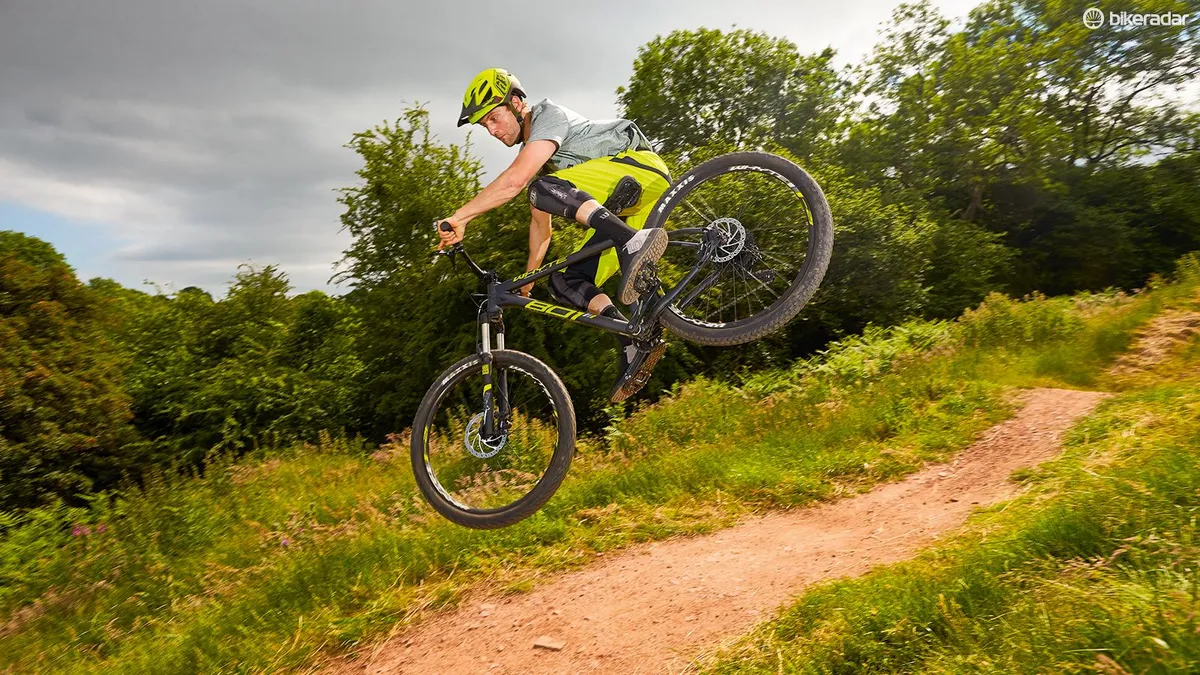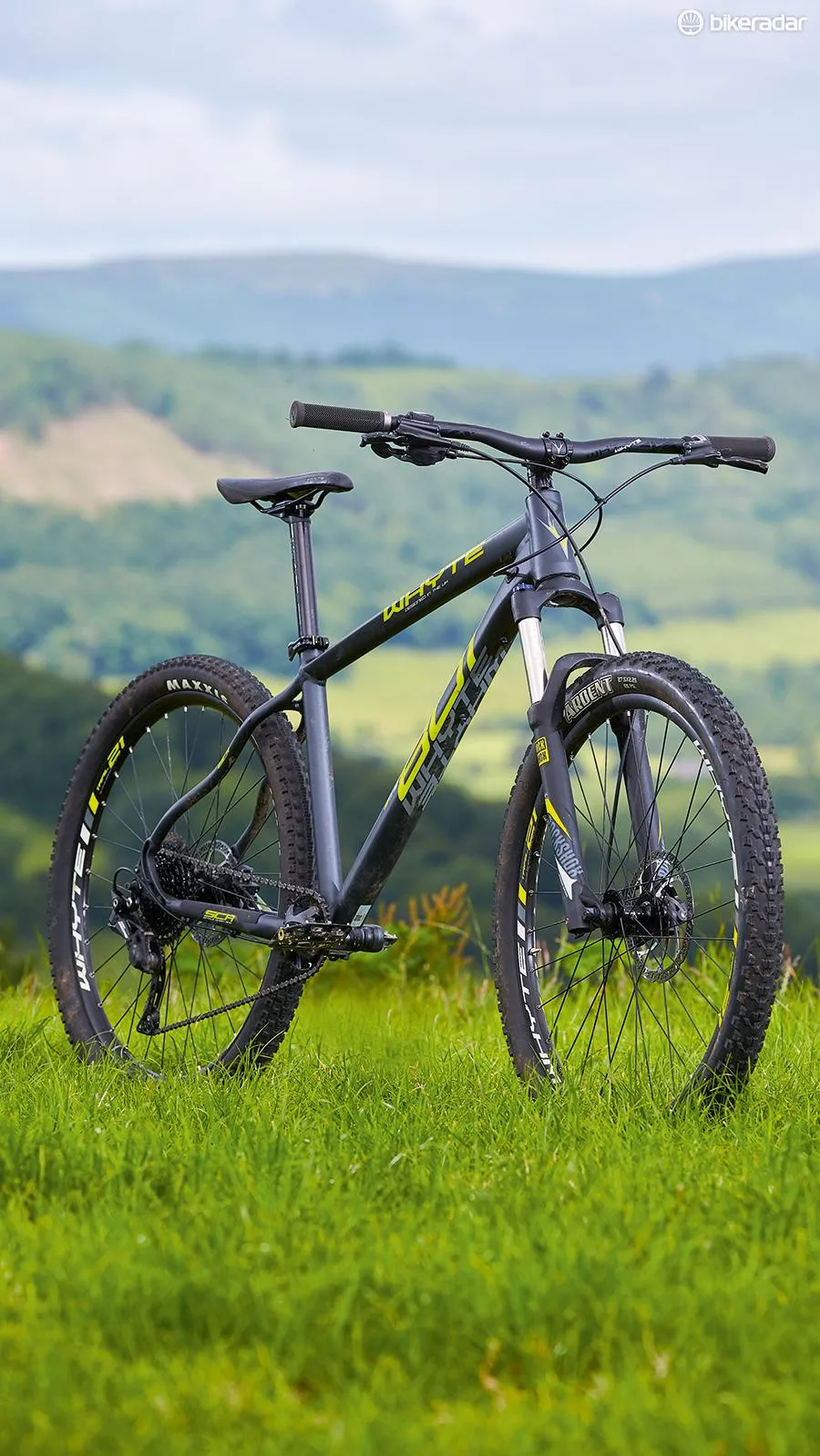We got hold of the latest version of Whyte’s affordable trail ’tail before its official release because we reckoned its sweet-riding frame would make it a contender, but obvious component compromises are a sobering pointer for how prices are going for 2018.
Cotswolds-based Whyte only had a medium sample of its 2018 bike for me to test, but in terms of reach (445mm) it’s not far off the large hardtail frames of Pinnacle's Iroko 1 and Saracen's Mantra Trail.
The 801 also has a slack head angle (66.5 degrees), along with a low bottom bracket (305mm) and relatively long back end (435mm). This gives it a very long and stable wheelbase for a 120mm-travel trail bike at any price. Together with heavily shaped chainstays and seatstays, this means there’s tons of tyre room.
Whyte’s semi-sealed ‘Getta Grip’ seat clamp adds weatherproofing, and because there are no bottle-cage mounts on the seat tube, the post can be slammed for the descents.
The ‘BBX’ internal routing directs the gear cable and rear brake hose through the down tube, and if you upgrade to a dropper post in future, you can run the cable/hose through the same way.
Whyte 801 kit
The amount Whyte has invested in the frame is obvious in the spec. It’s the only bike here with an old-school square taper bottom bracket, with skinny axle and internal cartridge.
While the fork is from RockShox, it’s the low-budget, skinny-legged 30 TK model with a quick-release axle (QR). At least the tapered steerer is alloy, not steel.
The Tektro brakes are wooden in feel and need a firm squeeze to stop adequately even with a 180mm front rotor. At 21mm (internal), the Whyte rims are relatively narrow, and not tubeless compatible, but the hubs do have adjustable bearings.

The Maxxis tyres are of the steel-bead rather than folding variety, which adds weight. They’re fast-rolling though, and grippier than they look.
The 801 is the only bike here with a contemporary single-ring transmission, courtesy of Shimano’s latest 11-speed Deore clutch mech and shifter and an FSA crankset.
A short 45mm stem and decent-width 740mm bar create a good cockpit shape for interacting with the excellent frame geometry without catching on every tree in the woods. There’s also the option of adding an own-brand dropper post.
Whyte 801 ride impression
Whyte has a knack of getting its bikes to feel ‘right’ on the trail even when they’re using radical geometry, and the 801 is no exception.
While the front wheel is thrown a long way out front, the way it self-corrects more noticeably the faster you go offers superb encouragement and confidence when things start getting sketchy.
The short stem keeps the steering precise and instantly reactive too. While the slack head angle inevitably means some wander at slower speeds on climbs, the rearward weight shift it produces is offset by the steeper seat tube.
Carefully manipulated frame tubes mean the ride quality is a great balance of shock-shruggingly smooth but still eagerly responsive under power. This is all the more impressive given the kit the 801 is wearing.
While the 30mm stanchions of the fork mean reduced seal and bushing drag, it struggles to stay on target and maintain a smooth action once you start pushing through corners or braking hard. The brakes also lack rich feedback.
On the plus side, the crankset transmits power pretty well despite its skinny axle and the single front chainring allows simple sequential gear shifting. It also saves weight to keep the Whyte competitive on the scales.
The 801 rides impressively, given the obvious component limitations, but there’s no escaping the fact the frame will be a lot closer to hitting its potential with the better kit of the more expensive Whyte 806.


